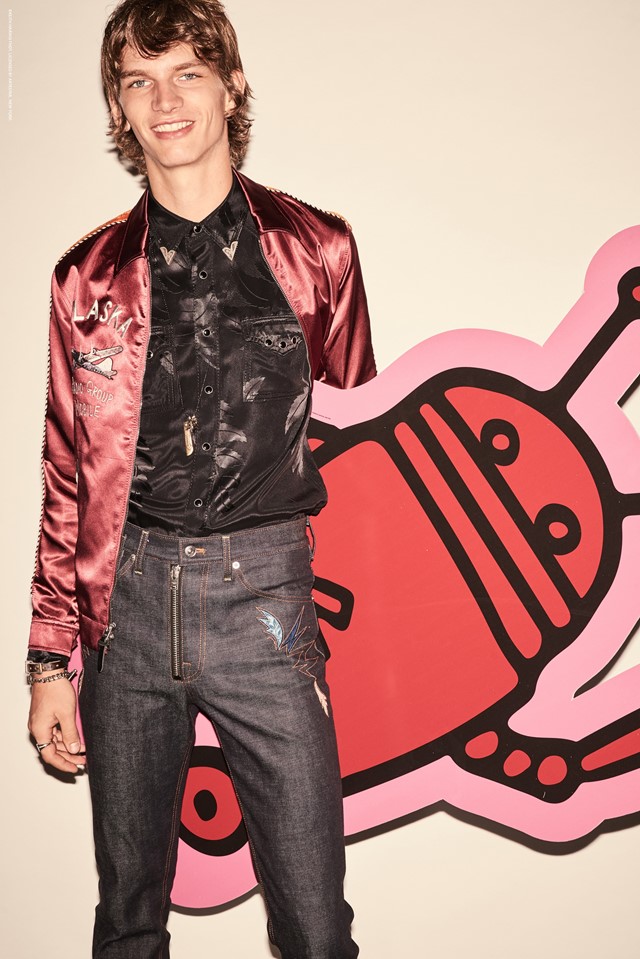In the wake of Coach’s Haring-inspired S/S18 collection, which arrives in stores today, we examine the artist’s enduring impact on fashion
- TextBenjamin Hammond
Three decades after his death, Keith Haring’s graffiti-like squiggles are still synonymous with the city’s downtown art scene. Though he died young, at just 31, the artist left an indelible impact on the worlds of art and fashion, continuing to inspire today. His work has been appropriated by designers such as Rei Kawakubo, Stephen Sprouse, Vivienne Westwood, and most recently Stuart Vevers of Coach, who collaborated with Haring’s estate for his S/S18 collection, which arrives in store today.
For this collection, Vevers incorporated the artist’s instantly recognisable graphics into the clothes, but also drew inspiration from who he was as a person – particularly his relationship with New York. “[Haring] was very much connected with real life, the everyday and the city,” the designer explains. “Like Coach, his art was born from the streets of New York. It was inclusive and for everyone. I’ve loved celebrating Haring’s work and values in our S/S18 collection, which ultimately is a celebration of New York’s diversity, energy, creativity and optimism.”
Born in Philadelphia, Haring moved to New York when he was 20 – a move that proved pivotal to his career. Upon his arrival, he immersed himself in the city’s thriving downtown art scene, curating exhibitions at Mudd Club, performing regularly at Club 57 and forming friendships with fellow artists such as Andy Warhol and Jean-Michel Basquiat, along with the princess of pop herself, Madonna.

He also took his art to the streets: armed with chalk, Haring covered empty ad spaces with his signature twisting lines and dancing figures (which even appeared on the sleeve of David Bowie’s 1983 single, Without You). His doodles also appeared on clothing worn by Madonna, and Grace Jones’ naked body.
Whilst Haring’s illustrations are vibrant and outspoken, his personal style was quite the opposite. Oval glasses, a tight white tee and mid-wash jeans became synonymous with the artist – a decidedly muted sartorial output from a man who would go on to impact fashion so much.
Haring may not have set out to leave such a legacy, but his is one that will no doubt continue to reverberate across art and fashion for many years yet.
More from our Style Icon series:
The Enduring Style of John F. Kennedy Jr.
Why Jim Morrison Was the Ultimate Romantic Rebel
The Spectacular Style of Cecil Beaton











